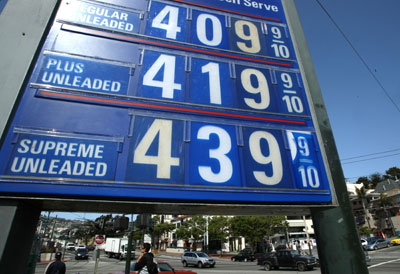Here’s the latest reader question, along with my reply!
Anri writes: Just had a brief follow-up to the question you recently answered on wagons. They have fallen out of favor in the US, but the real reason for this has less to do with genuine consumer preferences and more to do with bureaucratic hysteria.
In the early 2000s, various saaaaafety agencies in the federal government were insisting that were rolling death traps that would crush everyone inside if the driver got into so much as a fender bender – and they used too much gas too, at least according to the EPA and all the “Peak Oil” types that were using it as a mouthpiece.
As a fan of wagons myself, I find this to be an extreme loss for the American consumer, especially when compared to the current bestseller segment: crossover SUVs. Wagons are capable of having just as much cargo space as crossovers but their dimensions make them more maneuverable. Sedans are also easier to park and maneuver through lanes, and being no higher from the asphalt than sedans makes them easier to drive as well. Being lower does give them a theoretical disadvantage over crossovers in rougher terrain, but most people who buy crossovers will never see terrain rougher than a gravel driveway, making the extra height (and in turn extra drag) superfluous.
Americans have even shown that they like to drive wagons – so long as they aren’t marketed as such. As anecdotal proof of this I present the third-generation Toyota RAV4, my own daily driver. If you look at the dimensions and layout, it’s a station wagon in near everything but name, marketed as a crossover. And in my own experience, I see these third-gen RAVs (with the last model year being 2012) on the road much more often than I do the fourth-gen RAVs. The station wagon would have been the ideal body style for the American market, if only the bureaucrats hadn’t scared us all away from them.
My reply: I’ll disagree with you just a bit.
What really killed of wagons was CAFE – federal fuel economy regs. These regs downsized cars – and wagons based on them – and resulted in a change of layout from typically rear-drive (and V8) to FWD and four-cylinder, which practically eliminated the capacity of these latter-day small wagons to tow anything.
Meanwhile, SUVs – they weren’t yet called that – were subject to a much less strict CAFE standard and so were still available as large vehicles, with big engines and the capability to perform meaningful work. This is what created the SUV – and crossover SUV – boom.
Most of the wagons which you can still buy new are relatively small and light-duty. There is nothing mass-market to compare with a 9 passenger/three-row V8 Vista Cruiser that can pull a 5,000 lb. trailer . . . unless you buy a crossover SUV!
. . .
Got a question about cars, Libertarian politics – or anything else? Click on the “ask Eric” link and send ’em in!
If you like what you’ve found here please consider supporting EPautos.
We depend on you to keep the wheels turning!
Our donate button is here.
If you prefer not to use PayPal, our mailing address is:
EPautos
721 Hummingbird Lane SE
Copper Hill, VA 24079
PS: Get an EPautos magnet (pictured below) in return for a $20 or more one-time donation or a $10 or more monthly recurring donation. (Please be sure to tell us you want a sticker – and also, provide an address, so we know where to mail the thing!)
My latest eBook is also available for your favorite price – free! Click here. 












If I could pick out one car that was affordable for me to insure, it would be a 96 Anniversary model Buick Roadmaster Stationwagon. They had 350’s and 700R 4’s and bose sound systems with self-leveling suspension. I’d give my left one for a pristine version.
The people buying Vista’s back in the day now buy Tahoes.
It is really that simple.